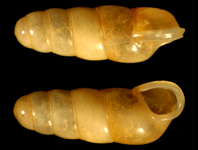Abstract
The Leptodactylus marmoratus species group, as currently recognized (Almeida & Angulo 2006), is composed of fifteen nominal species (Frost 2013). Tadpoles of eight species have been described, including species awaiting formal descriptions (e.g. Kokubum & Giaretta 2005). The tadpoles of this species group can be divided into two types: exotrophic tadpoles with aquatic development (e.g. Leptodactylus thomei; Almeida & Angulo 2006) and endotrophic tadpoles with terrestrial development (e.g. Leptodactylus hylaedactylus; Menin et al. 2009). Leptodactylus andreae Müller, 1923 occurs in lowlands of northern South America east of the Andes, including and limited to Amazonia to the south and east (Frost 2013). The tadpole of this species was briefly described in diagrammatic drawings by Hero (1990). Herein, we describe the tadpole of L. andreae based on individuals at three stages of development and also provide comments on the spawning sites.

